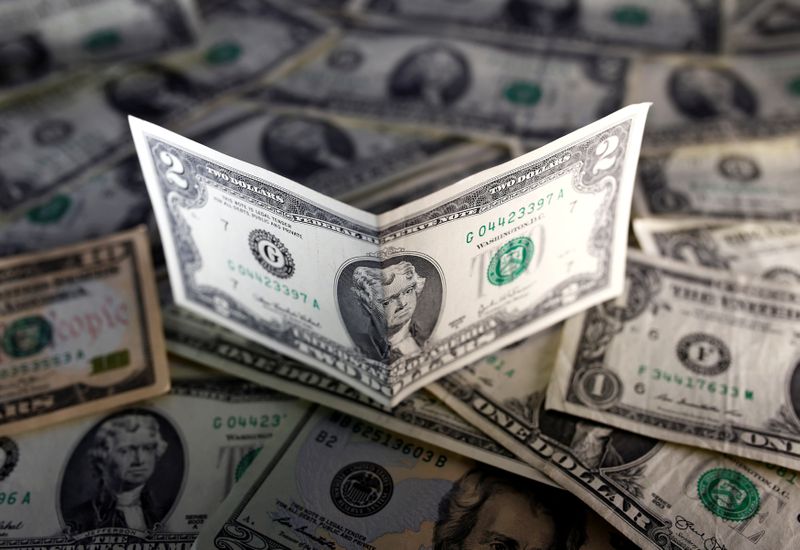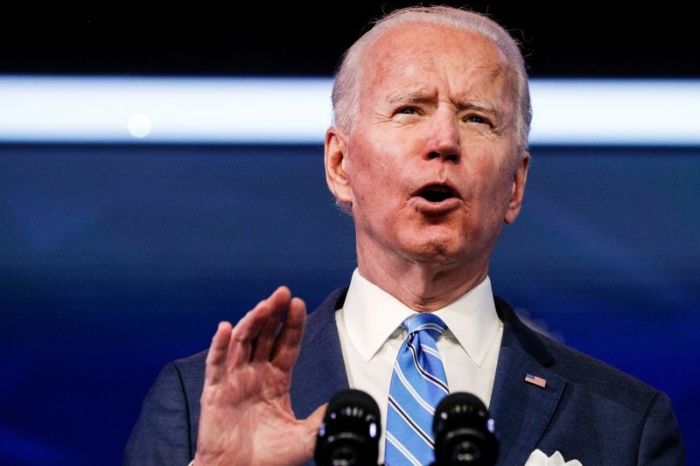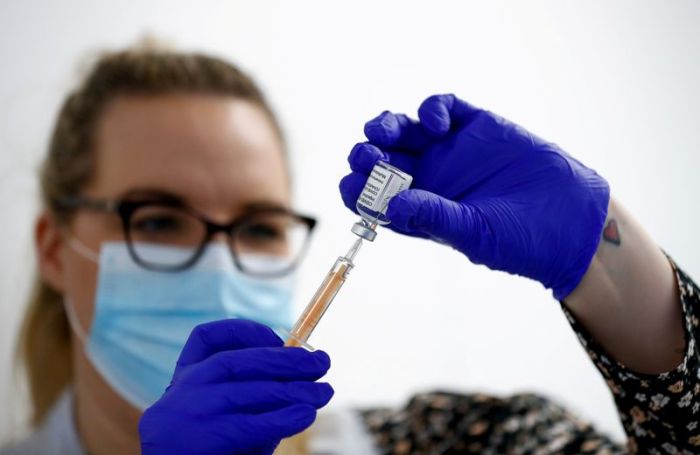NEW YORK (Reuters) – The U.S. dollar rose across the board to hit a four-week high against a basket of currencies on Friday, as data showing the COVID-19 pandemic’s continuing toll on the economy boosted demand for the safe-haven currency.
U.S. retail sales fell for a third straight month in December amid job losses and renewed measures to slow the spread of COVID-19, the Commerce Department reported on Friday, further evidence the economy lost speed at the end of 2020.
The weak data dragged U.S. Treasury yields lower and U.S. stocks fell as investors turned more risk-averse on Friday.
“I feel that after all the optimism regarding vaccines, we are now living the reality of a very slow (vaccine) rollout, which is weighing heavily on business activity,” said Juan Perez, senior currency trader at Tempus Inc in Washington.
“Until we have more guarantees on the medical front, markets will not continue to flourish despite whatever financial aid may be on the way,” Perez said.
Democratic President-elect Joe Biden on Thursday revealed a nearly $2 trillion proposal to address the COVID-19 pandemic and its economic harm that included $20 billion for vaccine distribution and $50 billion for testing. It builds on the $982 billion COVID-19 relief bill passed in December, more than tripling the funding allocated to state and local governments for vaccine distribution.
The U.S. Dollar Currency Index was 0.56% higher at 90.773, on pace to finish the week up 0.8%, its best weekly showing in 11 weeks.
Rising coronavirus infections also curbed risk appetite, as daily cases in China hit their highest in more than 10 months.
France will tighten its COVID-19 border controls and bring its curfew forward by two hours, while German Chancellor Angela Merkel said she wanted “very fast action” to counter the spread of virus variants after Germany had a record number of deaths.
The dollar’s rebound from three-year lows, which began last week, may have some more room to run if the state of the economy worsens, but the currency’s longer-term outlook remained weak, analysts said.
Data on Friday also showed U.S. producer prices rose moderately in December, suggesting that an anticipated pickup in inflation in the coming months will probably not be worrisome.
“While short-term, the U.S. dollar could extend further, the big-picture backdrop for the dollar remains negative,” MUFG currency strategist Derek Halpenny wrote in a note to clients.
Despite the recent rise in the dollar, speculators increased their net short dollar positions in the latest week, according to calculations by Reuters and U.S. Commodity Futures Trading Commission data released on Friday.
The deteriorating global risk backdrop sent sterling 0.8% lower, though data showing Britain’s November lockdown was less damaging for the economy than expected kept a floor under the currency.
(Reporting by Saqib Iqbal Ahmed; Editing by Steve Orlofsky and Jonathan Oatis)

























